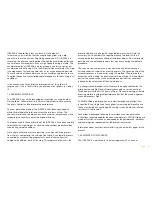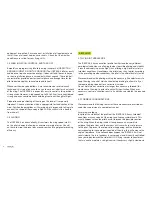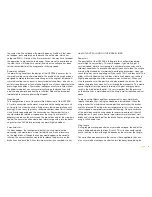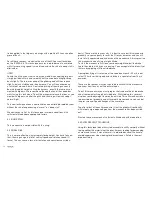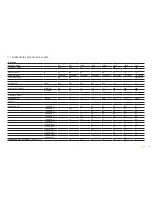
8
equipment inspection. ensure correct installation of all equipment and
that all lines are free of hindrances or knots. Check that the weather
conditions are suited for your flying skills.
3.5 WING INFlaTIoN, CoNTrol, aNd TaKe-oFF
smoothly and progressively inflate the wing (chapter 2.6 INspeCTIoN
aNd WING INFlaTIoN oN THe GroUNd). The ICepeaK 8 inflates easily
and does not require excessive energy. It does not tend to over-take you,
so the wing inflation phase is carried out without anguish. These take off
characteristics provide a perfect control phase and enough time for the
pilot to decide whether to accelerate and take off.
Whenever the wind speed allows it, we recommend a reverse launch
technique; this type of launch allows you to carry out a better visual check
of the wing. The ICepeaK 8 is especially easy to control in this position in
strong winds. However, wind speeds up to 25 to 30 km/h are considered
strong and extra consideration should be given to any thought of flight.
preparation and positioning of the wing on the take-off is especially
important. Choose a location which is appropriate for the direction of the
wind. position the paraglider as if it were part of a large circle, taking into
account the shape of the canopy in flight. all this will assist in a trouble
free take-off.
3.6 laNdING
The ICepeaK 8 lands excellently, it transforms the wing speed into lift
on the pilot’s demand, allowing an enormous margin of error. You will
not have to wrap the brake lines around your hand to get greater braking
efficiency.
4. IN FlIGHT
4.1 FlYING IN TUrBUleNCe
The ICepeaK 8 has an excellent profile to withstand the very different
aero-logical conditions so allowing the best possible piloting and stability.
It reacts admirably in passive flight, thus offering a high level of safety in
turbulent conditions. Nonetheless, the pilot always has to pilot according
to the prevailing weather conditions, the pilot is the ultimate safety factor.
We recommend active piloting, making the necessary fine adjustments to
keep the wing in control. He/she should stop braking to allow it to fly at
the required wing speed after a correction is made.
do not maintain any correction for longer than necessary (braked) this
would cause the wing to enter into critical flying situation. Whenever
necessary, control a situation, react to it and then re-establish the required
speed.
4.2 possIBle CoNFIGUraTIoNs
We recommend that training to master these manoeuvres be carried out
under the supervision of a competent school.
asymmetric collapse
In spite of the stability of the profile of the ICepeaK 8, heavy turbulent
conditions may cause part of the wing to collapse asymmetrically. This
usually happens when the pilot has not foreseen this possible reaction
of the wing. When the wing is about to experience an asymmetric
collapse the brake lines and the harness will transmit a loss of pressure
to the pilot. To prevent the collapse from happening, pull the brake line
corresponding to the compromised side of the wing, this will increase the
angle of incidence. If the collapse does happen the ICepeaK 8 will not
react violently, the turn tendency is very gradual and it is easily controlled.
lean your body towards the side that is still flying in order to counteract
the turn and to maintain a straight course, if necessary slightly slow down
Summary of Contents for ICEPEAK 8
Page 1: ...USER S MANUAL ICEPEAK 8...
Page 22: ...22 11 8 FOLDING LINES PLAN...
Page 28: ...28 11 11 ATTACHMENT POINTS POSITION...
Page 29: ...29 11 12 TENSION BANDS...
Page 30: ...30 11 13 MINIRIBS...
Page 31: ...31 11 14 DIAGONALS...
Page 32: ...32 11 15 INLET SHAPE...
Page 33: ...33 12 CERTIFICATION SPECIMEN TEST ICEPEAK 8 22 ICEPEAK 8 24...
Page 34: ...34 ICEPEAK 8 26...





